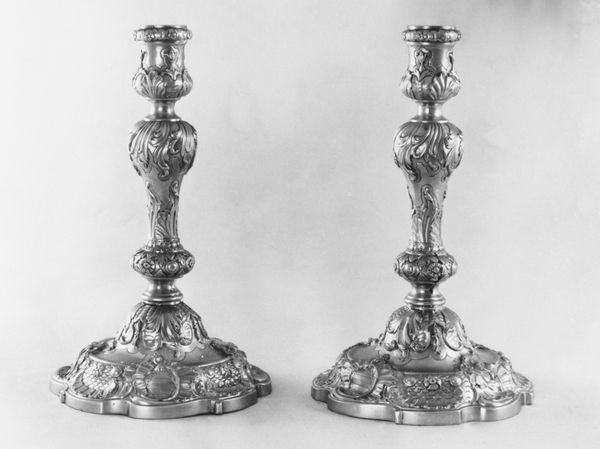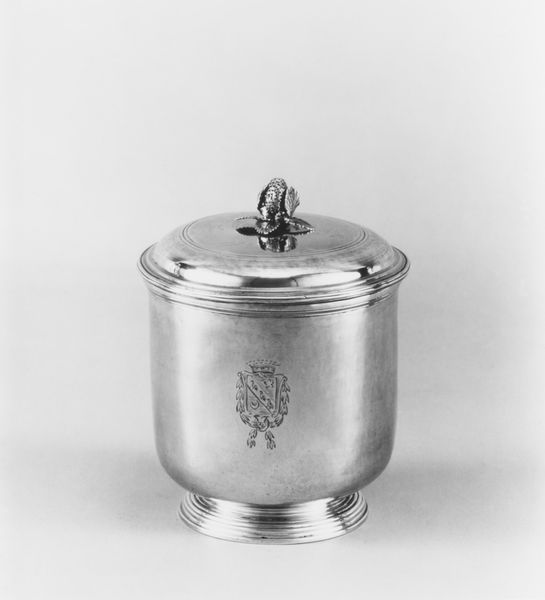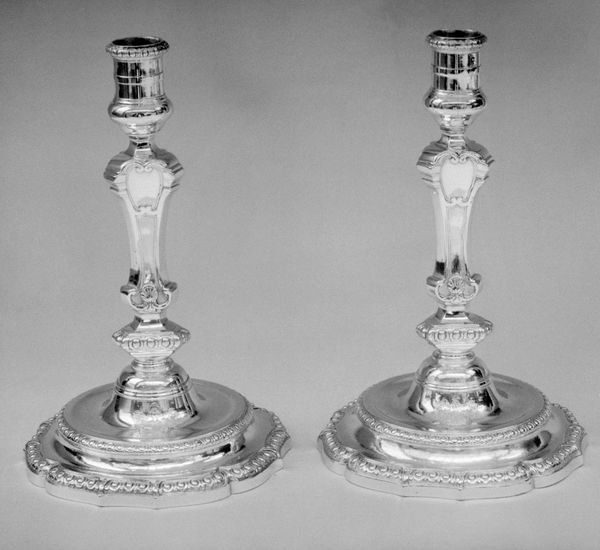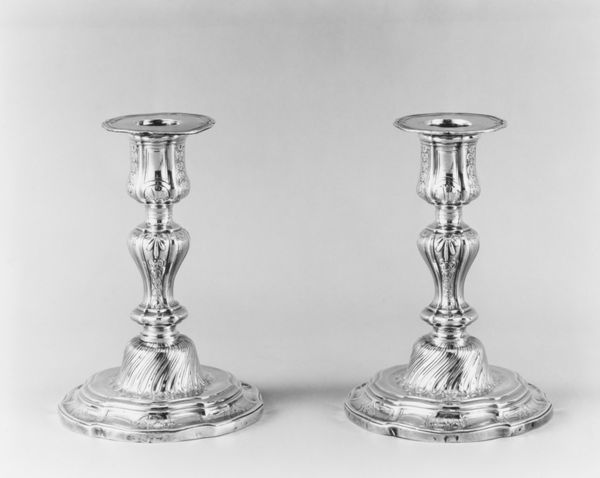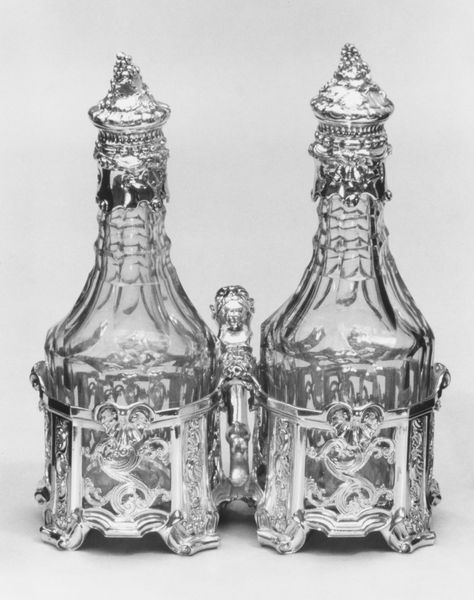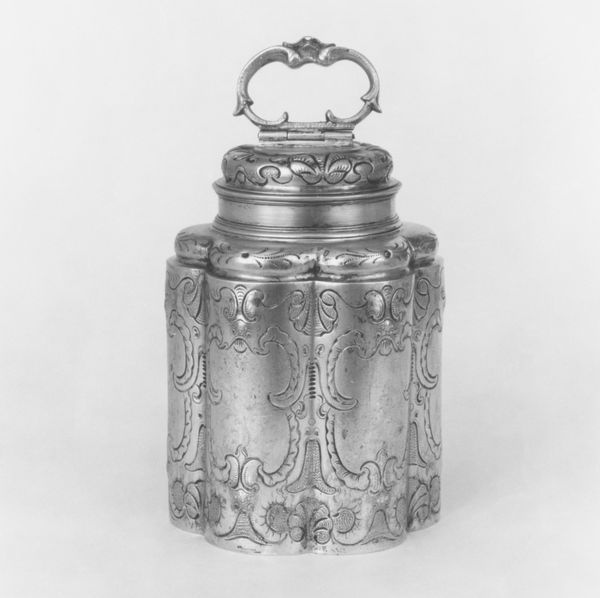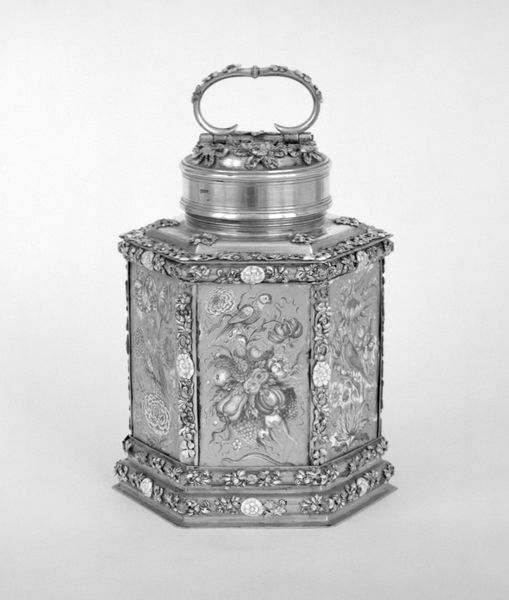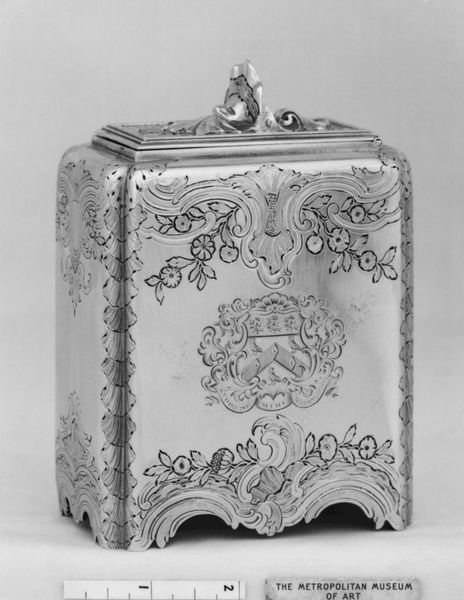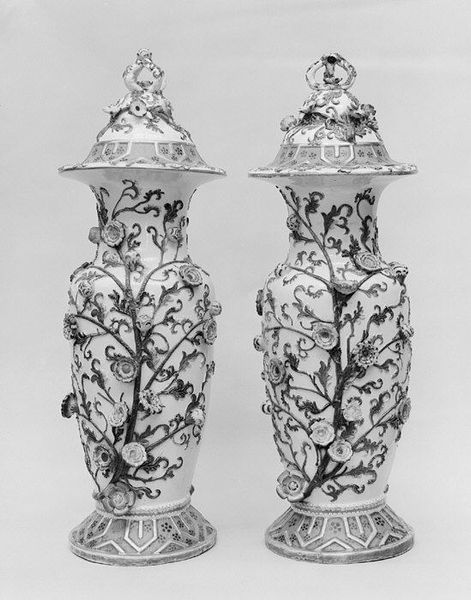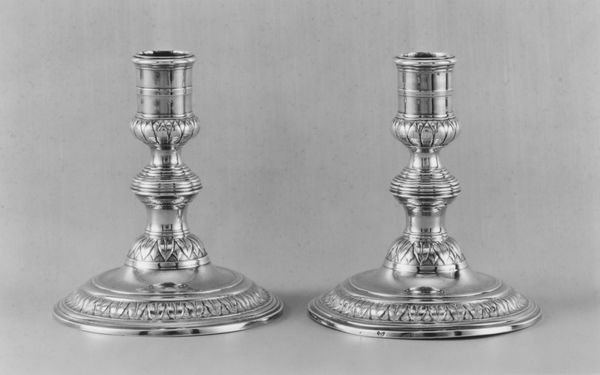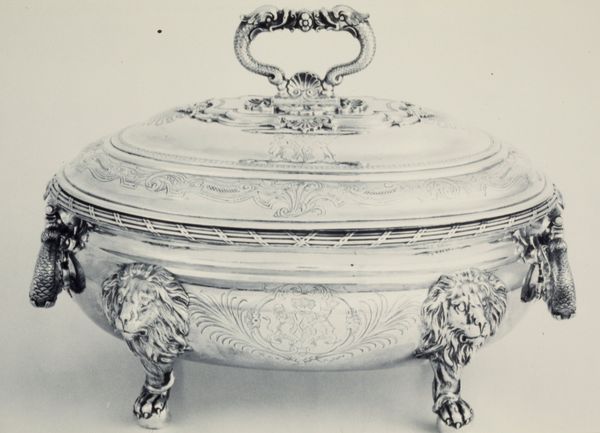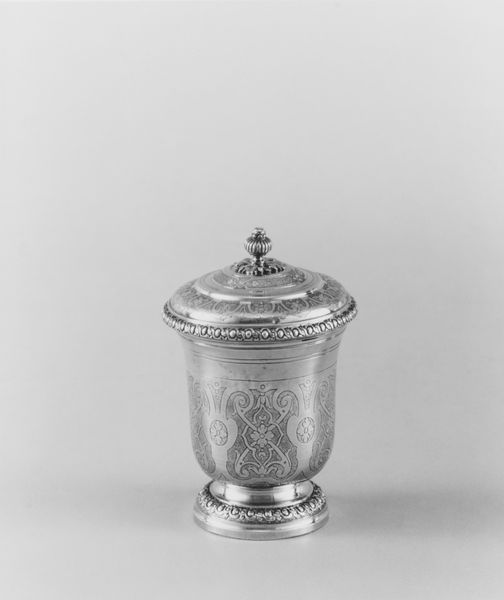
silver, metal, sculpture
#
silver
#
metal
#
sculpture
#
sculpture
#
decorative-art
#
rococo
#
statue
Dimensions: 5 3/4 x 3 1/8 x 3 1/8 in. (14.61 x 7.94 x 7.94 cm)
Copyright: Public Domain
Editor: This is a Tea Caddy, crafted between 1768 and 1769 by William Vincent. It's made of silver, a true sculpture in miniature! There's such elaborate detail; it seems like such a fancy container for tea. What's particularly striking to you about it? Curator: It is interesting to see such intricate metalwork used on an everyday object like a tea caddy. Tea was becoming incredibly popular and important to British society in the late 18th century. What do you think owning a silver tea caddy says about the owner's social standing? Editor: I suppose it signals wealth, good taste, participation in that high society of the time? Something purely functional turned ornamental...a way to perform refinement? Curator: Exactly. Think about the social rituals surrounding tea in the Rococo era. Owning an object like this was about conspicuous consumption and the performance of gentility. It also reflects Britain's growing empire, reliant on tea trade controlled by companies like the East India Company, impacting British economic power globally. Editor: So, a seemingly simple object is deeply embedded in societal and global structures... beyond just 'decoration.' Curator: Precisely. The silver reflects wealth; the design reflects aesthetic preferences; the tea reflects British colonial reach and control. Understanding these interwoven elements is key. What’s changed about the public role of this artwork in a museum compared to in its own time? Editor: It’s shifted from private enjoyment and signalling class to public appreciation. Now its purpose is education. Curator: Very well put. The tea caddy's journey reflects changing ideas about art and society.
Comments
No comments
Be the first to comment and join the conversation on the ultimate creative platform.
